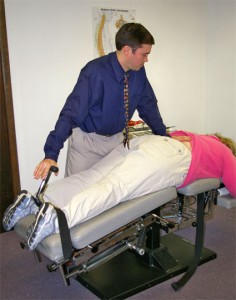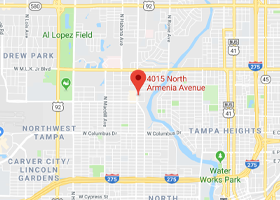Flexion distraction therapy uses a combination of traction and bending of flexion of the lumbar spine. It frequently uses in the treatment of lumbar herniated discs, with or without radiating symptoms into the leg, as well as facet joint syndromes (inflammation of the cartilage of the low back joints), lumbar stenosis and in patients who can not tolerate manual manipulation.
 The technique is performed with the patient lying face down on a specially designed table that flexes in the center allowing the portion of the table beneath the patient’s pelvis and legs to be lowered. The patient’s ankles may be fastened to the table. The doctor stabilizes the patient’s spine against the table with one hand and lowers the foot of the table repetitively.
The technique is performed with the patient lying face down on a specially designed table that flexes in the center allowing the portion of the table beneath the patient’s pelvis and legs to be lowered. The patient’s ankles may be fastened to the table. The doctor stabilizes the patient’s spine against the table with one hand and lowers the foot of the table repetitively.
Research demonstrates the therapy creates a negative pressure within the disc which may reduce the size of a disc herniation. Mechanically, the therapy increases the size of the canal within a nerve root exits. Nerve roots in the lumbar spine supply the leg and thigh, and leg symptoms may be reduced in the case of disc herniation or stenosis.
How it works: Repetitive flexion and traction of a lumbar disc facilitates imbibition. The disc is able to pump away inflammation and swelling as well as bring in new fluid to assist in healing, nutrition and healthy scar formation. The mechanism of action is similar in the cartilage of the lumbar facet joint.
Flexion distraction therapy is sometimes referred to as “Cox therapy” in reference to James Cox, D.C. the leading researcher and developer of the technique. Originally developed in the 1960’s the technique incorporates earlier elements of Osteopathic techniques. Our office has utilized this therapy for over 20 years.
